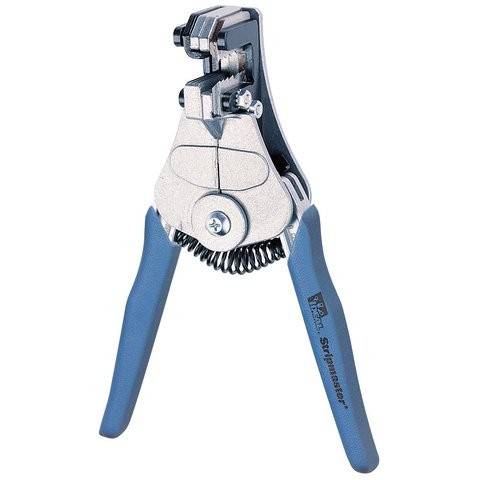I virtually always solder, because if done properly, it's bullet-proof and lasts forever. I prefer solid wire as opposed to stranded, because I find it easier to solder. Not opposed to using stranded, however. I will use it too, just prefer solid. This method works great with ANY combination of solid and/or stranded wiring.
After running buss wires and dropping feeders from the track, stripping the wires goes fast and easy with the proper tool. Here's a pic of an Ideal StripMaster wire stripper, courtesy of Yayhoo images.............

How it works: Slip the stripper over your buss wire to the proper sized wire gauge opening, then squeeze the handles together. The insulation is cut and forced apart on the continuous buss wire. Then select the proper size wire opening for the track feeder wire and strip the end off of it. Wrap the end of the feeder wire around the exposed buss wire and solder. If your wire connections are far enough apart where they won't touch and short out, you don't even have to insulate them after soldering.

Did you get all that? Let's go through that again. Above is a pic from underneath my N-scale layout (I hung my strippers on a buss wire just for the photo). FYI, my layout is built similar to an N-Trak modular layout, hence the multiple buss wires. Okay, so the 14 ga. solid buss wire insulation was stripped (displaced) with the stripper. Then the insulation on the end of the 22 ga. solid track feeder wire was stripped off, and wrapped around the buss wire. Afterwards I went through and soldered the connections. Notice I didn't bother to insulate the soldered joints, they are far enough apart and staggered enough where they can't touch and short out.
This method works great for me. I find it fast, easy, positive, and above all, inexpensive. I have never yet had a buss wire/feeder wire problem doing it this way. 







